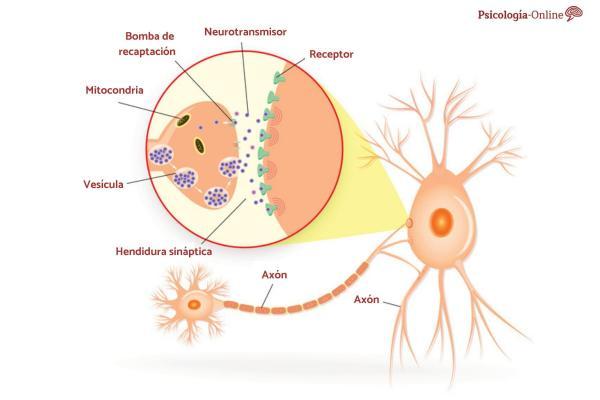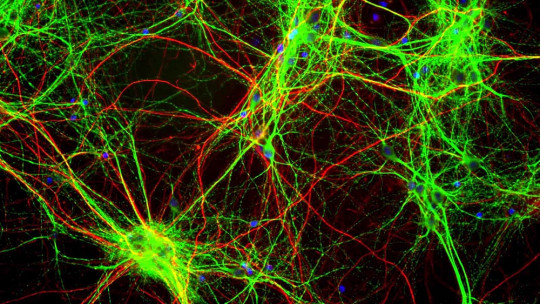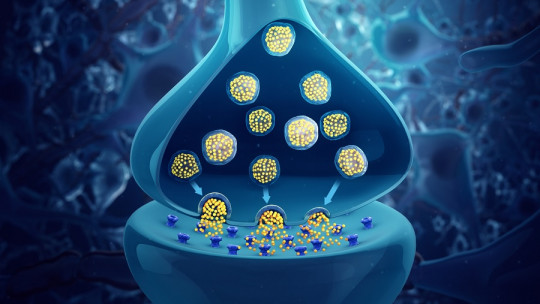The sadness hormone is not a specific one. There are several hormones that are involved in the formation of emotions. It is not only one that is involved in the process, but there are several involved, such as monoamines such as norepinephrine and serotonin.
Many studies argue that depression is due to a low level of activity in one or more monoaminergic synapses, although others believe that the involvement of dopamine and other hormones such as oxytocin and opiates in the regulation of sadness as an emotion is more important. More recent studies propose the glutamatergic hypothesis of depression, in which neurotransmitters such as glutamate and GABA participate. Since it would be very extensive to talk about all of them, in this PsychologyFor article, we will mention those that have been shown to be mostly related to sadness hormone, where it is produced and how it works
Where is the sadness hormone produced?
What is the sadness hormone? We will focus on those that have demonstrated a direct implication in depression. So, if you are wondering which hormones affect low mood, these are the monoamines, specifically norepinephrine and, above all, serotonin and glutamatergic hormones such as glutamate and GABA.
All hormones mentioned are synthesized in neurons specifically in the core and are distributed throughout the body through the action potential, a type of electrical current that moves information from one neuron to another.
In the following sections, we will see how the sadness hormone is produced by monoamines and glutamatergics.
How the sadness hormone is produced by monoamines
Some of the hormones linked to the feeling of sadness are monoamines, specifically norepinephrine and serotonin. Next, we will see how they are synthesized to be called sadness hormones.
Norepinephrine
To understand why norepinephrine is a hormone that causes sadness, we are going to show you the process by which the norepinephrine in our body:
- Norepinephrine is a catecholamine that is synthesized from tyrosine.
- Norepinephrine enters catecholaminergic neurons through a transport mechanism that is not specific, but is shared by other amino acids.
- Once inside the neuron, in the presence of the enzyme tyrosine hydroxylase, it is converted into L-DOPA, a limiting step that is very difficult to produce. This, in the presence of the aromatic enzyme decarboxylase, is converted into dopamine, a neurotransmitter.
- Once dopamine is synthesized, it is introduced into the synaptic vesicles and, to reach norepinephrine, the enzyme dopamine-beta-decarboxylase is needed.
- The inactivation of norepinephrine It takes place mainly by the reuptake of the released enzymes that re-enter using a specific high-affinity transport mechanism for each of them.
- Once inside the varicosity, a part of them will be degraded by MAO (monoamine oxidase) and another part will enter the vesicles to be used again later. Another part will be degraded before entering the cell, these will pass into the blood and be eliminated through urine.
Serotonin
To determine that serotonin is a hormone responsible for sadness, we will see how it is synthesized in our body from the amino acid tryptophan.
- Tryptophan enters serotonergic neurons via a transporter that is not specific for tryptophan.
- Once inside the neuron, tryptophan is converted into 5-hydroxyd-tryptophan and transformed into 5-HT tryptamine (serotonin).
- Serotonin is stored inside synaptic vesicles and is released when calcium channels open at the arrival of the action potential.
- The serotonin inhibition It is exclusive by reuptake, a transporter that specifically recognizes serotonin and will introduce serotonin into the presynaptic neuron.
- Much of the serotonin will be degraded by MAO, which degrades any monoamines that are free in the cytosol. Before being degraded, a part could enter the interior of the vesicles and be reused as a neurotransmitter. In this article, we tell you in more detail what neurotransmitters are and how they are classified.
- The resulting degradation products will pass into the blood and be eliminated through urine.
How the sadness hormone is produced by glutamatergic
As we have seen, the sadness hormone has many names, since different types of hormones are involved in the formation of emotions. Some of them are glutamatergic ones such as glutamate and GABA. Discover how they are synthesized to be called sadness hormones.
Glutamate
A neurotransmitter, whose synthesis of glutamate can only occur if there are reserves of glutamine, since this is its precursor. While it is being manufactured, it is capable of regulating its own synthesis, so that glutamate inhibits glutamine by a process called inhibition of the final product.
Specifically, glutamate stored in synaptic vesicles and is released when calcium channels open. It produces its effect on the postsynaptic membrane and is inactivated for neuronal reuptake, but the largest amount enters the interior of neighboring glial cells by active transport.
The glutamate that enters the glial cells will be converted into glutamine by the action of the glutamine synthetase enzyme and will serve to form more glutamate again.
GABA
GABA is synthesized from glutamate decarboxylase in GABAergic neurons. This synthesis takes place in the terminal button. Once synthesized, they are stored within the synaptic vesicles when the action potential arrives by exocytosis. It is inactivated by reuptake of the terminal and glial bouton by high affinity markers that specifically recognize GABA and transport it into the cell.
In this article you will find more information about what GABA is and what it is for.
How the sadness hormone works
The presence or not of the hormones mentioned previously, along with others, will regulate emotional expression causing states of sadness to occur to a greater or lesser extent.
Until now it has always been believed that serotonin It could be the one that has the greatest involvement in moods and aggressive behaviors or pain regulation, among other functions, such as the regulation of carbohydrate intake or the sleep-wake cycle.
Therefore, serotonin would be closely related to clinical disorders such as depression. That is why its supply is used in pharmacological treatments. It is also true that it would seem to have a greater relevance of the MAO enzyme , since it is what also regulates hormones such as dopamine, norepinephrine and adrenaline, involved in pleasure processes. Discover the differences between adrenaline and norepinephrine.
Lately, the importance of glutamate in the treatment of depression and sadness has been demonstrated, being the endogenous opioids a potential target of study in its involvement in sadness, so that low levels of these can enhance negative emotional expressions. In this article, we tell you in more detail which neurotransmitters are involved in depression.
This article is merely informative, at PsychologyFor we do not have the power to make a diagnosis or recommend a treatment. We invite you to go to a psychologist to treat your particular case.
If you want to read more articles similar to Sadness hormone: what it is, where it is produced and how it works we recommend that you enter our Neurosciences category.
Bibliography
- American psychiatric association, (2014). Diagnostic and Statistical Manual of Mental Disorders DSM – 5. Madrid Spain. Pan-American medical publishing house.
- Belloch, A., Sandín, B., Ramos, F., (2009). Manual of psychopathology, volume II. Madrid. McGraw Hill / Interamericana de España, SAU
- Carlson, N. R. (2014). Behavioral physiology. Madrid. Pearson Education, S.A.
- Ferré, N. (2019). Psychopharmacology. Autonomous University of Barcelona.7Portell, A. (2015). Transmitting Substèancies. Autonomous University of Barcelona.









